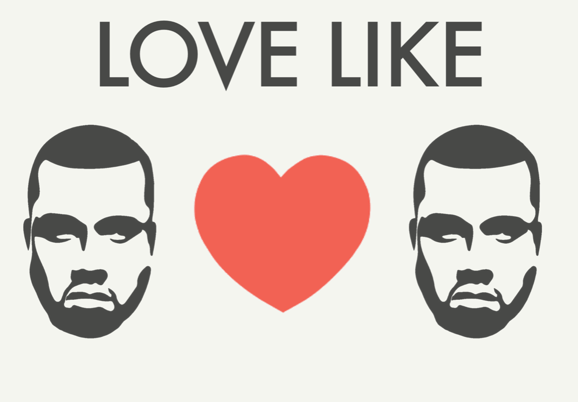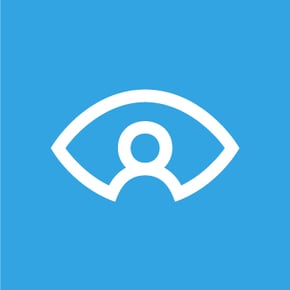If you take a peek into the online world, you’ll quickly realize a couple of things:
1. We use our unparalleled information age to create memes,
2. Kanye loves Kanye, and
3. people really, really dislike pre-employment assessments.
The latter may not seem so apparent if you type in “pre-employment assessment” into Google; a slew of pro pre-employment tools arise. Which is understandable—it’s HR tech companies saying how great it is and you should try it. Of course, they’re on Team Employee Assessment.

What is a pre-employment assessment?
Pre-employment tests consist of different tools, games, or questions used to learn about a candidate’s strengths, weaknesses, personality, or problem-solving patterns. Resumes are just one way to learn about a person’s skill set or past experience.
Pre-employment tests are meant to learn more about what makes a person tick, become inspired, or what frustrates them. Misrepresentation occurs on resumes, so these kinds of tools offer another relevant approach to becoming acquainted with a candidate. Many pre-employment assessments can be accessed online; a potential employer usually sends a link within an email or sometimes, a candidate is requested to fill one out in person.
Though individuals may be skeptical about these assessments, they’re aimed to solve major challenges organizations face during the hiring process. Here’s why organizations like incorporating pre-employment assessments:
Handles the volume
On average, big companies receive 500 applications for a single position. That’s for one position! Think of multinational corporations who advertise for hundreds, if not thousands, of open vacancies! Google receives around 2 million applications for its open positions. Companies are trying to figure out effective and efficient ways to sift through the piles of applications.
There’s little chance that a hiring manager has time enough to go through applications and give them equal attention. You don’t have to be Google to understand this struggle. Mid-sized companies receive an average of 118 applications per vacancy. This kind of volume quickly becomes a time efficiency problem.
Limited attention span
If hiring managers were to go through applications manually, the quality of their attention drops. We humans are wired to only deliver a focused, cognitive performance of about 4 hours per day. To manually read through 1,000 applications in 4 hours is simply not going to happen. Not only is the sheer volume the challenge, but we’re talking about the limits of the human brain. A study from researchers at the Technical University of Denmark found that as a whole, global attention span dropped as there’s a barrage of information being presented to us daily.
Push notification, Tweets, to Google Scholar research, information is aplenty. The issue, as Phillip Lorenz-Spreen of Max Planck Institute for Human Development explains to the Guardian is "content is increasing in volume, which exhausts our attention and our urge for ‘newness’ causes us to collectively switch between topics more regularly.'' Combined with our innate ability to only intensively concentrate a few hours a day, recruiters are up against a neurobiological wall. Their time is limited, but so is their ability to concentrate enough to give equal attention to each application. This is not the recipe for a fair and inclusive hiring process.
Equal weight
Organizations are taking diversity and inclusivity as a serious business priority. With thousands of applications, there is no way that a person’s brain will give the same attention to Application Number 1 as the same to Application Number 397. It becomes an issue of fairness.
Additionally, we all carry around biases, whether we realize it or not. The best companies understand their employees may not mean to have certain pre-conceived notions about certain groups or individuals, so they try to eliminate the opportunity for bias to occur. Research has shown how easy it is for a person’s unconscious bias to influence reading resumes. This results in a system that disproportionately disfavors women and minority candidates.
For example, recruiters in STEM rated women significantly lower than a Caucasian male; a female with a 4.0 GPA receive the same rating as a white male with 3.75 GPA. Employers tended to be less impressed when female and minority candidates had a prestigious internship.
Corinne Low, assistant professor of business economics and public policy at the Wharton School of the University of Pennsylvania oversaw the study, explaining “It was quite a big effect,” Low says. “Women and minorities only got about half the boost that a white man would have.” Additionally, employers gave no value to candidates who held “work for money” jobs, like as a waitress or lifeguard. For applicants who come from lower socio-economic status, it may be particularly challenging to land a job.

These are the main reasons why organizations remain so hyped about artificial intelligence (AI) and other pre-employment assessment tests and tools: because it may give them a hand. Even a small bit of help will feel exponential to time-strapped recruiters and talent professionals. They’re trying to solve the problem of volume, time, and bias.
The kinds of pre-employment assessments are vast and varied. Some organizations may value one fit over the other, hence the many options available. In general, tests focus on one of these categories:
Personality assessment
The best kind of test qualify candidates along the 5 dimensions of advanced personality research: introversion-extroversion, openness, conscientiousness, agreeableness, and emotional stability. This kind of pre-employment assessment gives a snapshot of the person an individual, rather than as a set of skills or past employers.
Subject matter knowledge
Potential employers may be on the hunt for someone who’s an expert in the field of data analytics or land resource management. These kinds of tests examine the level of expertise of candidates.
Culture fit assessment
An organization may place heavy weight on their values and core mission. Outdoor clothing giant Patagonia places heavy emphasis on hiring activist employees and even encourages its employees take part in non-violent protests on behalf of the planet. The company even pays for bail, if an employee is arrested. Companies like Patagonia are looking for a certain kind of employee and a culture fit assessment helps them find their tribe.
Cognitive ability
Organizations want to know how a person processes information and learn new skills. Cognitive ability tests like the Criteria Cognitive Aptitude Test (CCAT) aims to ascertain a candidate’s potential to process novel information and creatively present solutions.
Soft skills
Knowing how to understand a room’s emotion is a skill. Facilitating goals involves harmonious action and leadership. Soft skills assessment is how organizations learn about applicants’ capabilities in working, negotiating, and collaborating with people.
Why organizations benefit from pre-employment assessments
Fully understanding a candidate in a 360 degree view is challenging. The interview process is intimidating; one “false move”and a candidate doesn’t receive a second interview or a job offer. Candidates remain guarded, going to great lengths to appear enthusiastic and as a perfect fit to the job description. Some hiring managers may not be as skilled or experienced in weeding out the qualified from the unqualified. Hence the pre-employment assessment or test to give them a hand. According to the 2018 Talent Board Candidate Experience Research Report, 91% of the companies use these kinds of tests during the hiring process.
Increase hiring efficiency
Information about a candidate should be quick and easy. One benefit of a pre-employment assessment is how quickly a manager can gather information about a person. This saves time and streamlines an otherwise arduous process.
More information, better fit
Hiring a person takes an enormous amount of resources. From the multiple interviews, cost of keeping a vacancy open. Aptitude tests are one way to assist managers when resources are limited. Teams want colleagues that go beyond the job requirements: they want someone that will be on their team, assist in times of trouble, and at the end of day, pretty cool to hang out with.
The advantages for an organization are clear, but what about advantages for the candidate?

Employees want to work for companies that clearly care about them. Patagonia can boast they have an unparalleled 4% turnover rate. Their industry of retail and apparel has an average of 13%. No small part of that is how they think about other aspects of employees’ lives: they send nannies with parent-employees when they have to go on business trips; they even have child-care available at the office. This kind of people-centric approach saves them incredible costs on having to identify and find qualified talent. Patagonia’s method should inspire companies in keeping the employer and employee relationship mutually beneficial.
Pre-employment assessments should be useful to both parties.
This is one way to handle “the haters” or the individuals who have legitimate concerns about the efficacy of such tests. It’s a challenge to convince people to try new things; many groups are skeptical to use technology, especially when it comes to a sensitive subject like their personality or how they’ll fit into a team. Take a cue from companies like Adaface, a company that helps companies find great engineers by assessing on-the-job skills; they shorten assessment times, give generous time allowance, and establish trust by a no-trick-questions policy. Assessments should be respectful of candidate's time and priorities.
Despite how pre-employment assessments appear, how can hiring managers emphasize they care about candidates?
The pre-employment process needs to emphasize how they balance online testing with the personal touch.

Before the interview
The standard email goes out when an applicant receives an interview request: “Hey, you’ve been selected for an interview. We’d like you to fill out this pre-employment assessment”.
It seems a bit…anti-climatic. They just spent X amount of hours writing a cover letter, adjusting their resume, and clicking through a company’s application site. A pre-employment assessment seems like winning the lottery only to realize you’re getting a plastic chicken as a prize. Not a nice impression.
Include the “why”
Explain to them how much you value them as an individual and you want to give their interviewer a more holistic snapshot of who you are as a person. With that information, an interviewer has time to prepare for more poignant and thoughtful questions that are tailored to a candidate and their experience. By including “why”, the HR department just leveled up their candidate experience game. Applicants will feel they’re being paid attention. If possible, include the name and possible LinkedIn profile of the person interviewing them. This strikes a visual balance of online test and human connection.
Give candidates feedback
One user on Reddit appreciated how they gained new knowledge about their strengths and weaknesses through a pre-employment test. Potential employees should receive receive a benefit from taking time to take a test. Find tests that can be mutually beneficial. Assessments don’t have to be a one-way street. In fact, given the paradigm of work is transforming into ones with flatter hierarchies, this arrangement shows forward thinking.

A pre-employment assessment becomes candidate-centric, rather than another action they require from an applicant. The entire pre-employment assessment may not go back to the candidate, but be sure to include a portion that would be particularly edifying to a person. An assessment that analyzes a person’s strengths, weaknesses, leadership, and soft skills is a start. Make this a mutual exchange and watch your candidate experience gain power.
Skills testing equals skill bonus
Past job performance is under analysis. If aptitude tests measure skill aptitude and job requirements, then why not let it also be an opportunity to delight their candidate? One suggestion is to give candidates a percentage off or a giveaway on online learning platforms, like Skillshare or Coursera. This shows candidates you’re interested in their success, even if its not with your company at this time. Imagine candidates telling their friends about how they received a free month’s trial to learn more about R or video editing. And they haven’t even had an interview yet! This kind of experience is bound to create a broader sales tunnel.
Think of your candidate as your customer
Richard Branson’s Virgin Media calculated they lost $5 million a year on poor candidate experience. Because the people they called in for an interview were also customers of other Virgin products, like its cable network or airlines. With only the cable network, 6% of applicants canceled their subscription after their unprofessional experience. When an organization suggests an interview, that applicant should be getting some sort of star treatment—the same as a customer with a willing pocketbook.

How AI assists in the pre-employment assessment process
Artificial intelligence (AI) give back what managers are so desperate to create: more time and a streamlined process. AI is only meant to assist and support, not replace a talent professional. AI-powered recruiting means faster results for both organizations and candidates. AI-powered recruiting means faster results for both organizations and candidates.
To improve the candidate experience, this could be another big advantage: delivering results and feedback sooner than “we'll give you a call back, probably by late next week”. With results arriving in the hands of HR professionals sooner, they’ll be able to take more time on the most qualified list of candidates. With that list, they’ll be able to schedule interviews quickly. With certain AI video interview software, candidates and interviewers don’t even have to coordinate a time. It can be done at a candidate’s convenience; for organizations, this means managers won’t have to interrupt their days with a multitude of interviews. For talent professionals, they’ll be mentally available to work on the human-oriented tasks of creating a career development plan for employees.
AI already assists corporations like IBM to improve their candidate process with AI chatbots. Their HR team saves significant time by not having to answer commonly-asked questions along the way. With an in-depth skill test analyzed, companies gain freedom to not only find the best talent but develop their own employees.
How AI can assist exist employees’ skill sets
Subject matter expertise, soft skills, and personality traits can all be evaluated and learned—and not just for employees-to-be. Existing employees can easily take part in learning about their own strengths and weaknesses through pre-employment tests. Of course, it depends on the ease of the test and how accessible the test is made to be for employees.
Retorio learned from a customer that they used Retorio’s AI and Big 5 combination to create in-house team building. They not only used the tool to find and qualify potential employees, but they found it useful to create dynamic teams. These kinds of assessments can be also be part of the people-centric model of a candidate experience. Assessments can be part of the career and skill development of employees, another value-add from their employers. AI-powered assessments distributes this kind of value easily to employees.
A pre-employment assessment doesn’t need to be intimidating—or hated. Provide obvious value for candidates by making it mutually beneficial and exciting.
Click below to revolutionize your hiring and employee development with Retorio


